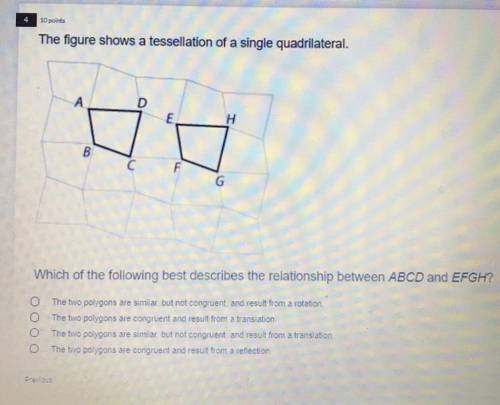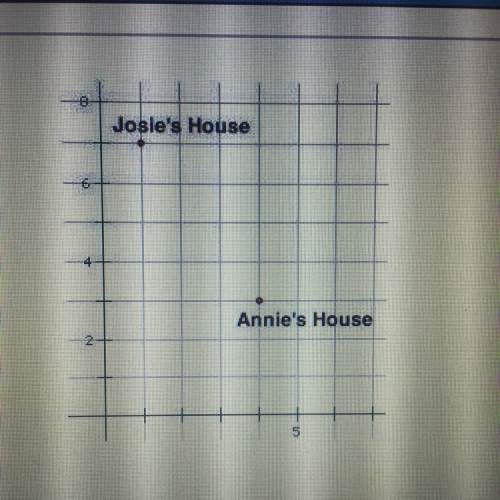Which of the following best describes the relationship between ABCD and EFGH?
...

Mathematics, 22.08.2020 23:01 winterblanco
Which of the following best describes the relationship between ABCD and EFGH?


Answers: 2


Other questions on the subject: Mathematics

Mathematics, 21.06.2019 13:30, 2021sherodisabella
Malia is observing the velocity of a cyclist at different times. after two hours, the velocity of the cyclist is 15 km/h. after five hours, the velocity of the cyclist is 12 km/h. part a: write an equation in two variables in the standard form that can be used to describe the velocity of the cyclist at different times. show your work and define the variables used. (5 points) part b: how can you graph the equations obtained in part a for the first 12 hours? (5 points) if you can try and make this as little confusing as you can
Answers: 2

Mathematics, 21.06.2019 18:00, nathanowens121224
If 1/√5+1/√5+1=p+q√r , find the values of p, q and r
Answers: 2

Mathematics, 21.06.2019 18:30, Ateruel95
Dakota earned $7.50 in interest in account a and $18.75 in interest in account b after 15 months. if the simple interest rate is 4% for account a and 5% for account b, which account has the greater principal? explain. to make it a little easier, there is an image. good luck!
Answers: 1

Mathematics, 21.06.2019 23:30, bbby2
Aprisoner is trapped in a cell containing three doors. the first door leads to a tunnel that returns him to his cell after two days of travel. the second leads to a tunnel that returns him to his cell after three days of travel. the third door leads immediately to freedom. (a) assuming that the prisoner will always select doors 1, 2 and 3 with probabili- ties 0.5,0.3,0.2 (respectively), what is the expected number of days until he reaches freedom? (b) assuming that the prisoner is always equally likely to choose among those doors that he has not used, what is the expected number of days until he reaches freedom? (in this version, if the prisoner initially tries door 1, for example, then when he returns to the cell, he will now select only from doors 2 and 3.) (c) for parts (a) and (b), find the variance of the number of days until the prisoner reaches freedom. hint for part (b): define ni to be the number of additional days the prisoner spends after initially choosing door i and returning to his cell.
Answers: 1
You know the right answer?
Questions in other subjects:


History, 25.06.2019 18:40





Social Studies, 25.06.2019 18:40


Mathematics, 25.06.2019 18:40




